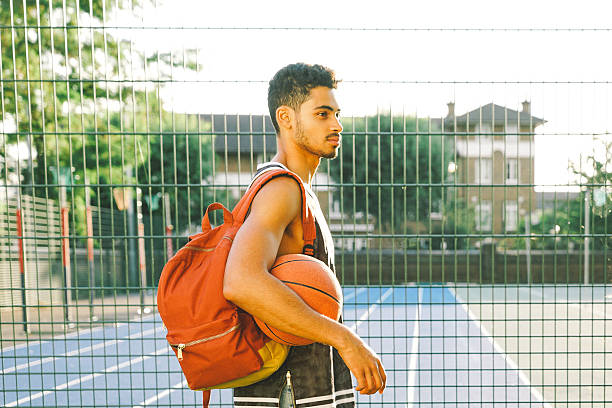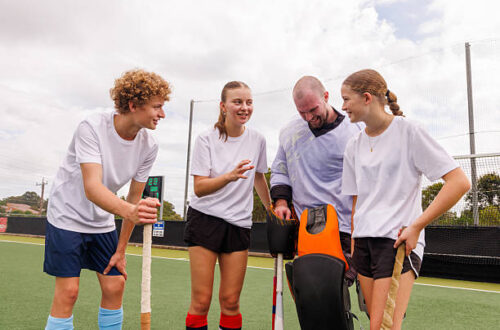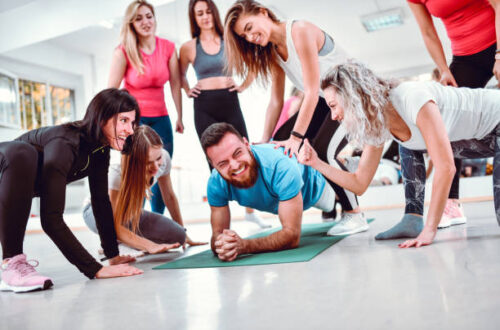It’s a beautiful day, the sun is shining, and you’ve just finished a long day of classes. The last thing you want to do is head to a crowded, stuffy gym. Good news: you don’t have to. You can get an incredible workout right outside, without a single piece of equipment.
Outdoor workouts are not only a great way to save money and avoid the gym, but they also provide a much-needed mental break. The fresh air and sunshine can boost your mood, reduce stress, and help you feel more connected to your surroundings.
Here are 15 easy and effective outdoor workout ideas for students, all of which require no equipment. You can do these on a campus field, a park, a running track, or even in your backyard.
Warm-Up: Get Your Body Ready
Contents
- 1 Warm-Up: Get Your Body Ready
- 2 Strength and Cardio Exercises (No Equipment Needed)
- 3 Beyond the Exercises: Designing Your Own Outdoor Workout
- 4 Finding the Perfect Outdoor Workout Spot
- 5 Making It a Habit: Tips for Students on the Go
- 6 Your First Step: Overcoming the Biggest Obstacle
- 7 The Biggest Benefit: Building a Lifelong Habit
- 8 Frequently Asked Questions
Before you start any workout, it’s important to get your muscles warm and your heart rate up. A good warm-up prevents injury and prepares your body for the exercises to come. A proper warm-up sends a signal to your body that it’s time to work.
- Jogging in Place: Stand in one spot and lightly jog for 2-3 minutes. This gets your heart rate up and starts to warm your muscles.
- Jumping Jacks: Do 25-30 jumping jacks to get your whole body moving. This simple exercise works your entire body and is an excellent cardio warm-up.
- Arm Circles: Circle your arms forward and backward 10-15 times in each direction. This is great for loosening up your shoulders and upper back.
- High Knees: Run in place, but bring your knees up to your chest as high as you can. Do this for 30-45 seconds. This exercise is great for engaging your core and getting your heart pumping.
Strength and Cardio Exercises (No Equipment Needed)
These exercises target all the major muscle groups and get your heart pumping. Choose 5-7 of these and perform them in a circuit, moving from one to the next with minimal rest.
- Squats: Stand with your feet shoulder-width apart. Lower your hips as if you are sitting in a chair, keeping your chest up and your back straight. The key to good form is to make sure your knees don’t go past your toes. This exercise is great for your glutes, quadriceps, and hamstrings.
- Push-Ups: Start in a plank position with your hands a little wider than your shoulders. Lower your chest toward the ground, then push back up. This is a classic exercise for your chest, shoulders, and triceps. If this is too hard, you can modify it by doing push-ups on your knees.
- Lunges: Step forward with one foot and lower your body until both knees are bent at a 90-degree angle. Push back up and repeat with the other leg. Lunges are excellent for your legs and core, and they also improve your balance.
- Plank: Start in a push-up position or on your forearms. Keep your back straight and your core tight, holding the position for as long as you can. The plank is the ultimate core-strengthening exercise and works your entire body.
- Burpees: This is a full-body cardio and strength exercise. From a standing position, drop into a squat. Then, kick your feet back into a plank. You can do a push-up if you want. Next, jump your feet back to the squat. Finally, explode into the air. This exercise is challenging but incredibly effective for building stamina and power.
- Sit-Ups or Crunches: Lie on your back with your knees bent. Place your hands behind your head or across your chest and lift your upper body toward your knees. This works your abdominal muscles.
- Tricep Dips: Find a sturdy bench or a low wall. With your back to the bench, place your hands on the edge. Extend your legs out in front of you and lower your body by bending your elbows. Push back up to the starting position. This is a great workout for your triceps and shoulders.
- Wall Sits: Find a wall and lean against it with your feet flat on the ground. Slide down until your knees are bent at a 90-degree angle, as if you are sitting in an invisible chair. Hold this position for as long as you can. This exercise is amazing for building leg endurance.
- Box Jumps (using a bench or step): Find a sturdy bench, a park step, or a low wall. Stand in front of it and jump up onto the surface, landing with both feet. Step back down and repeat. This is a great exercise for explosive leg power.
- Sprints: Find a long, open space like a running track or a campus field. Sprint as fast as you can for 30-60 seconds, then walk or jog back to your starting point to recover. This is an excellent way to improve your cardiovascular fitness.
- Star Jumps: Similar to jumping jacks, but you jump up and out, making your body form a “star” shape in the air. This is a high-intensity cardio move that gets your heart rate soaring.
- Bicycle Crunches: Lie on your back and place your hands behind your head. Lift your shoulders off the ground and bring your right elbow toward your left knee, while extending your right leg. Alternate sides in a pedaling motion. This exercise works your obliques and core.
- Calf Raises: Stand near a wall or a tree for balance. Rise up onto the balls of your feet, hold for a moment, and then slowly lower back down. This is a simple but effective way to strengthen your calf muscles.
- Glute Bridges: Lie on your back with your knees bent and feet flat on the ground. Lift your hips off the ground until your body forms a straight line from your shoulders to your knees. Squeeze your glutes at the top and then lower back down. This is great for strengthening your glutes and hamstrings.
- Mountain Climbers: Start in a high plank position. Alternately bring your knees toward your chest as if you are running in place. This is a fast-paced cardio and core exercise.
Beyond the Exercises: Designing Your Own Outdoor Workout
Knowing the exercises is just the beginning. The real power is in knowing how to combine them into a routine that works for you. Here are three simple methods you can use to design your own workout.
The Circuit Training Method
A circuit is a series of exercises performed one after another with minimal rest in between. This is an excellent way to get a full-body workout in a short amount of time.
How to do it:
- Choose 5-7 exercises from the list above (e.g., Squats, Push-Ups, Lunges, Plank).
- Perform each exercise for a set number of repetitions (e.g., 15 squats, 10 push-ups).
- Rest for 30-60 seconds after completing all the exercises in the circuit.
- Repeat the entire circuit 3-4 times.
The Interval Training Method
High-Intensity Interval Training (HIIT) is a method that involves short bursts of intense exercise followed by brief recovery periods. This is a fantastic way to improve your cardio and burn a lot of calories in a very short amount of time.
How to do it:
- Choose a cardio exercise like Sprints or Burpees.
- Go all out for 30-60 seconds (the “work” period).
- Rest or do a low-intensity activity (like walking) for 60-90 seconds (the “rest” period).
- Repeat this cycle 8-10 times.
The Pyramid Method
This method is great for building strength and endurance. You start with a small number of reps, increase them on each set, and then decrease them back down.
How to do it:
- Choose 2-3 exercises (e.g., Squats, Push-Ups).
- Start with 5 reps of each.
- On your next set, do 10 reps of each.
- Continue increasing the reps (15, 20, 25…).
- Then, work your way back down the “pyramid” (20, 15, 10, 5).
Finding the Perfect Outdoor Workout Spot
You don’t need a fancy gym to get a great workout. Campus life is full of natural “gyms” just waiting for you to use them.
The Campus Green or Field
This is your most accessible option. A wide, open space is perfect for almost every exercise on our list, from squats and lunges to sprints and burpees. It’s also a great spot for stretching and cooling down.
The Local Park
Parks are often filled with benches and steps that are perfect for your workout. Use a park bench for tricep dips or box jumps. The stairs can be used for step-ups or sprints. Some parks even have playgrounds with bars you can use for pull-ups (for a more advanced workout).
The Running Track
A running track is a fantastic place for a workout. The clear, flat surface is perfect for sprints and timed workouts. You can use the benches along the track for your dips and the open field in the middle for your bodyweight exercises.
Making It a Habit: Tips for Students on the Go
A great workout routine is useless if you don’t stick to it. Here are some tips to help you make outdoor workouts a regular part of your student life.
The “Micro-Workout” Strategy
You don’t need to block out an hour to exercise. A 10-15 minute “micro-workout” between classes or before dinner is much better than nothing. You could do a quick circuit of squats, push-ups, and planks and still get a great fitness boost.
Find a Workout Buddy
Working out with a friend can make the experience more fun and keep you accountable. You’ll be less likely to skip a workout if you know someone is waiting for you at the park. Plus, you can motivate each other and even challenge each other to a friendly competition.
The “Why”: Linking Exercise to Your Goals
When you feel unmotivated, remember why you’re doing this. You’re not just exercising to stay fit; you’re doing it to improve your focus in class, reduce your stress during exams, and have more energy to enjoy your social life. Linking your workout to your bigger goals will give you the motivation you need to stick with it.
Fueling Your Outdoor Workout
Don’t let a lack of proper nutrition derail your workout. You don’t need expensive shakes or supplements. A banana, a granola bar, or a handful of nuts before your workout will give you the energy you need. And remember to always bring a water bottle with you to stay hydrated.
Your First Step: Overcoming the Biggest Obstacle
We all know exercise is good for us. The real challenge is finding the motivation to start. It’s easy to say, “I’m too busy,” “I’m too tired,” or “I’ll do it tomorrow.” The biggest obstacle isn’t a lack of time; it’s the feeling that you have to be perfect.
Instead of thinking about a full hour at the gym, just put on your sneakers and walk out the door for 15 minutes. The goal isn’t to set a world record or have the perfect workout. The goal is to simply start. Taking one small, positive action creates a domino effect. That 15-minute walk can lead to a 30-minute jog a few days later, which can eventually lead to a regular sport you love. The key is to remember that consistency is more important than intensity. Even a little bit of activity is far better than none. Don’t wait for the perfect moment. The best time to start is right now.
The Biggest Benefit: Building a Lifelong Habit
The habits you build in college will stay with you for a lifetime. When you learn that you can get a great workout without a gym membership or fancy equipment, you’re not just staying fit for four years; you’re building a foundation for a healthier, happier life long after graduation. You’ll be able to work out anywhere, at any time, for free.
By making outdoor exercise a part of your routine, you’re making an investment in your well-being that will pay off for years to come. The mental clarity you feel after a run, the strength you build with a simple circuit, and the joy of moving your body in the fresh air will become something you crave. The goal isn’t just to complete a workout, but to find joy in movement itself. It’s about building a foundation of health and confidence that will serve you in all aspects of your life.
Frequently Asked Questions
Q1: How often should I do these workouts?
Aim for 3-4 times a week, with rest days in between. Consistency is more important than intensity.
Q2: What if I’m not very fit?
That’s okay! The key is to start. You can modify these exercises to your fitness level. For example, do push-ups on your knees, or take a walk instead of a sprint. The goal is to get moving, not to be perfect.
Q3: Is it better to exercise indoors or outdoors?
Exercising outdoors has a lot of extra benefits. The fresh air and natural light can boost your mood and help you feel more energized. It’s also a great way to break up your routine and get a much-needed change of scenery.
Q4: What’s the best time of day to work out for students?
Both morning and evening workouts have benefits. A morning workout can give you an energy boost and help you feel more focused for the day ahead. An evening workout is a great way to de-stress after classes and can even help you get a better night’s sleep. The best time is simply the time that works for you and your schedule.
Q5: How can I stay active in the winter or when the weather is bad?
Look for indoor options. Campus gyms often have basketball courts, volleyball courts, and table tennis tables. Swimming is also a great all-weather sport. You can also get a fantastic workout with bodyweight exercises in your dorm room or by following a free yoga or HIIT workout video online.
Q6: How do I make my outdoor workout more challenging?
Once you get comfortable with the exercises, you can make them harder. Try increasing the number of repetitions you do per set, doing more total sets, or decreasing your rest time between exercises. For example, instead of holding a plank for 30 seconds, try for 45 or 60. You can also try combining exercises, like doing a burpee with a push-up.
Q7: What should I wear for an outdoor workout?
Comfortable athletic clothing is best. Wear layers so you can adjust to the temperature. In warmer weather, wear breathable fabrics. In cooler weather, wear a long-sleeve shirt and a jacket you can easily take off. Always wear supportive sneakers that are comfortable for running and jumping. In sunny conditions, remember to wear sunscreen and a hat.





